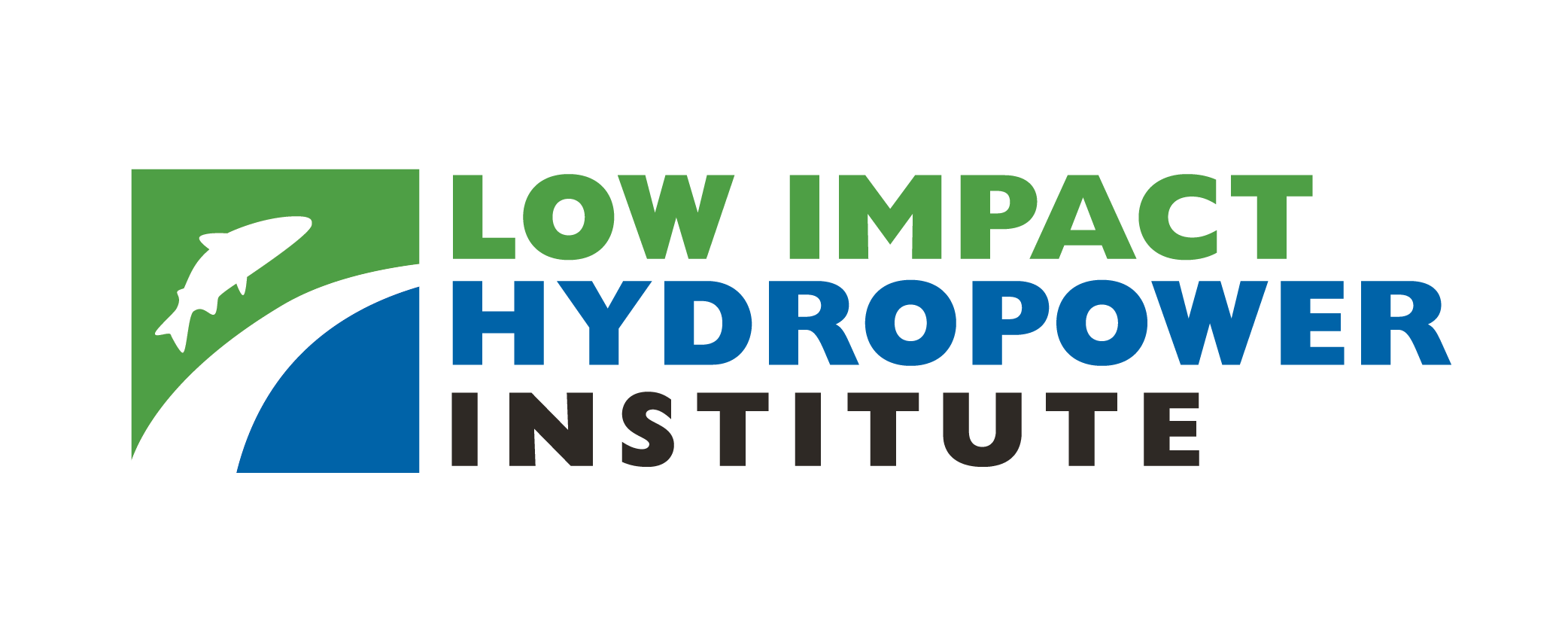LIHI 證書 #204 - 莫莉瀑布計畫(佛蒙特州)

| 項目名稱 | 莫莉瀑布 |
| 理海證書編號 |
204 |
| LIHI 證書期限 |
2025年3月28日-2035年3月27日。 |
| 擁有者 | 綠山電力公司 |
| 狀態 | 佛蒙特 |
| 地點 | 皮查姆池溪、薩克溪、莫莉溪、威努斯基河
馬什菲爾德 6 號 壩 位於 Molly's Brook 的 River Mile 1.6 |
| 裝置容量 | 5兆瓦 |
| 平均年發電量 | 6,444 兆瓦時 |
| 設施類型 | 有限的季節性儲存 |
| 聯邦能源監管委員會 不。 | 不受聯邦能源管理委員會監管 |
莫莉瀑布計畫由兩個開發案組成:位於佛蒙特州卡利多尼亞縣皮查姆鎮的皮查姆開發項目,以及位於佛蒙特州華盛頓縣馬什菲爾德鎮和卡伯特鎮的馬什菲爾德6號開發案。該項目位於皮查姆池塘溪、薩克溪、莫莉溪和威努斯基河沿岸。
該項目排放到威努斯基河的下游有幾座水壩,其中包括四座 LIHI 認證的設施—— 威努斯基 8 (LIHI #77), 博爾頓瀑布 (LIHI #201), 埃塞克斯 19 (LIHI #146), 和 威努斯基一號/蔡斯米爾 (LIHI #16).
皮徹姆:
皮查姆開發案於1930年在皮查姆池塘溪(Peacham Pond Brook)上建成。該項目目前沒有水力發電,但已預留了未來發電廠的建設空間。 壩 蓄水池是一座382英畝的泉水池塘。這座土石壩長710英尺,高25.6英尺,溢流口寬90英尺。 溢洪道 此蓄水池為開放式結構,未配備擋水板或其他蓄水裝置。
該場地有一個鋼筋混凝土進水口結構,採用鑄鐵滑門和手動操作的螺桿操作器。進氣結構還包含一組 停止日誌 槽、閘門周圍6吋的旁通管以及間距2.5吋的攔污柵。攔污柵處的進水口高7.5英尺,寬6.5英尺,控制流向直徑4英尺的鋼筋混凝土出水管的流量,該出水管從進水口結構延伸穿過堤壩,到達堤壩下游的堤腳。排水管長122英尺,有9吋厚的現澆鋼筋混凝土牆。堤防左端是90英尺寬的溢洪道段,有12吋厚的護岸石層和混凝土心牆。
5 月 1 日至 11 月 30 日,皮查姆池塘的水位維持在正常運作水位。冬季水位下降用於減少下游尖峰流量並提高安全性。每年 12 月 15 日之前,水位下降速度限制為每週不超過 6 至 12 英吋。從 2025-2026 年冬季開始,除非符合維護、雪水含量或高流量預測標準,否則冬季降水量不得超過正常運作水位以下 3 英尺。 5 月 1 日(或補充至正常運作水位的日期)至 7 月 31 日(或佛蒙特州自然資源局 (VANR) 確定潛鳥築巢完成的日期,以較早者為準)期間,水位將按照潛鳥協議進行維護。這包括將池塘水位管理得盡可能接近正常運作水位,並確保在正常運作水位上下 0.5 英尺的範圍內是安全的。 8 月 1 日(或 VANR 確定潛鳥築巢完成的日期,以較早者為準)至 11 月 30 日期間,Peacham 池塘水位將保持在 Peacham 池塘正常運作水位 1 英尺以內。
全年中,流入 Sucker Brook 的最低流量都在變化。 Peacham Pond 開發案位於 徑流 (ROR)模式,從 5 月 1 日(或更晚的 Peacham Pond 補充日期)到 11 月 30 日。在 12 月 1 日至 5 月 1 日(或 Peacham Pond 補充至正常運作水位的日期)期間,有最低流量要求。在下降、補充和 ROR 操作之間的轉換過程中會發生斜坡。皮查姆池塘補水期間,大壩出口處的最小流量為 6.7 立方英尺/秒,如果流量小於 Sucker Brook 的流量,則為淨流入蒸發量。在正常的冬季水位下降過程中,最大峰值流量為 25 立方英尺/秒,或流入量(如果更高),只有在流入量較大的情況下,為了大壩安全而維持穩定的池塘水位時,才會增加流量。水從 Peacham Pond 水壩的出水口流經 0.6 英里長的 Sucker Brook 流入 Molly's Falls 水庫,可提供額外的儲存空間。
馬什菲爾德 6 號:
目前的馬什菲爾德6號壩位於莫莉溪與威努斯基河交會處上游1.9英里處。該壩建於1927年(此前已在1914年之前建成並投入了三座大壩),攔蓄了377英畝的莫莉瀑布池塘,莫莉瀑布池塘州立公園也坐落於此。這座滾土壩長1100英尺,最大高度48.5英尺。該水壩配備一個12英尺寬、13.8英尺長的矩形進水口結構,高度9.75英尺,以及一個40英尺寬、260英尺長的服務溢洪道,並配備了一對並排的 滑動 蓋茲。每個門的寬度為 18 英尺 7 英吋。緊急溢洪道寬 46 英尺,長 370 英尺,由上游混凝土結構(帶閘門)和階梯狀混凝土通道(帶側壁)組成,通往 瀑布水潭 在莫莉溪。緊急溢洪道上游的閘門結構可將水留在水庫中,並在需要時打開,將水排入溢洪道。有兩個閘門,每個閘門寬 23 英尺,由三個擋木欄桿組成, 支柱.
大壩在莫莉溪上形成了一個約 1.9 英里長的繞行河段。進入旁路河段的最小流量是透過旁路管道提供的,該管道從水庫深處約 28 英尺處提供冷水,或透過服務溢洪道滑門提供。從七月到三月,最低釋放流量為 8.5 立方英尺/秒,從四月到六月,最低釋放流量為 12 立方英尺/秒。
水從水壩輸送到 發電站 透過門房和混凝土管道,轉換成焊接鋼 壓力水管 並繼續流經調壓箱和發電站,發電站位於威諾克西河上,距其與莫莉溪交匯處約 700 英尺。
發電站進水口設有寬 12 英尺、高 14 英尺的鋼製攔污柵。 3 英寸深、3/8 英寸厚的鋼筋中心間距為 4 英寸,頂部和底部由兩根水平鋼工字樑支撐。發電站配備一台 Norcan 垂直 混流式水輪機 理論容量為 5 兆瓦,但通常發電量較低。
該項目不受聯邦能源管理委員會 (FERC) 監管,因為它是在 1927 年聯邦許可條例頒布之前建造的。此計畫受佛蒙特州公共事業委員會監管。
該項目採用限量季節性儲能模式運作。 5月1日至11月30日,水庫水位維持正常運作水位。在此期間,允許的波動限度會有所不同。從 5 月 1 日(或更晚的春季補充)到潛鳥築巢開始,允許 0.5 英尺的波動。在潛鳥築巢季節,水庫水位盡可能保持穩定和安全。從 8 月 1 日(或潛鳥築巢結束時間,以較早者為準)到 11 月 30 日,讓水位在正常運行水平上下 1 英尺波動。一年中的任何時候,由於暴風雨和大量融雪/降雨,允許更大的波動。
莫莉瀑布水庫的冬季放水最早於 12 月 1 日開始,並在 3 月中旬之前完成。達到最大下降深度後開始補充,通常在 5 月 1 日之前完成。在正常情況下,冬季最大下降深度比正常運轉限值低 2.0 英尺。如果預測雪水當量或降水量異常高,為了安全管理下游水流,可能會出現更大的水位下降。
不存在洄游魚類,工程沒有上游或下游 魚道 設施。可能的受威脅或瀕危物種包括北長耳蝠和候選帝王蝶。白頭鷹和其他受保護的遷徙物種也可能存在,以及幾種州級保護植物、一種爬行動物和淡水珍珠蚌。佛蒙特州魚類和野生動物部 (VDFW) 表示,該計畫可能不會對這些物種造成影響。
未列出任何文化或歷史資源 國家歷史遺跡名錄 或佛蒙特州歷史名勝名錄;然而,項目結構已經足夠老了,符合資格。
該項目不包括任何正式或非正式的娛樂設施或接入點。莫莉瀑布池州立公園 (Molly's Falls Pond State Park) 提供通道和便利設施。 VDFW 在 Molly's Falls Pond 和 Peacham Pond 均設有公共船坡。
合規狀態
此證書包含以下設施特定條件:
條件一: 在向 LIHI 提交的年度合規報告中,設施所有者將提供有關流量和水位管理監測計劃、溶解氧監測計劃以及 河岸 區域恢復計劃,直到所有項目都已實施、相關研究已經完成,並且 VANR 同意不需要進行任何額外的改進。
2025: 目前證書的年度報告尚未生效。
認證歷史
2025年9月2日: 低影響水力發電研究所已就莫莉瀑布水力發電計畫的認證發布了最終決定。申訴期於2025年8月28日結束,期間未收到任何申訴。認證期限為10年,自2025年3月28日起至2035年3月27日止。
2025年7月29日: 低影響水力發電研究所 (LIHI) 已初步批准莫莉瀑布水力發電計畫 (待批准 LIHI #204) 獲得低影響認證。完整申請及審核報告如下。
該決定是初步決定,需等待 30 天的上訴期。只有在 60 天的評論期內對初始申請發表評論的人才有資格提出上訴。此類上訴需要包括對項目不符合 LIHI 標準的解釋。申訴請求可以透過電子郵件發送至 評論@lowimpactHydro.org 請在郵件主旨中註明“莫莉瀑布計畫”,或郵寄至低影響水電研究所,地址:68 Harrison Ave Ste 605, PMB 113938 Boston, Massachusetts 02111-1929。所有申請都將發佈在網站上。申請人將有機會回复,回復也將發布。 請求必須在 2025 年 8 月 28 日美國東部時間下午 5 點之前收到。 如果沒有收到上訴請求,認證期限將為 2025 年 3 月 28 日至 2035 年 3 月 27 日。
2025年4月2日: 低影響水力發電研究所已收到莫莉瀑布水力發電計畫低影響認證的完整申請。 LIHI 正在就此申請徵求公眾意見。具體來說,我們想知道您是否認為該項目符合 LIHI 低影響認證標準,該標準已在首次申請時有效的第二版手冊中修訂。請查看 LIHI 的計劃和標準 手冊修訂版 2.05 然後查看以下項目申請資料。與 LIHI 具體標準(流量、水質、魚類通道等)直接相關的評論將非常有幫助,但所有評論都會被考慮。評論可以透過電子郵件提交給研究所,郵箱地址為 評論@lowimpactHydro.org 請在主旨欄註明“Molly's Falls 專案評論”,或郵寄至 Low Impact Hydropower Institute, 68 Harrison Ave Ste 605, PMB 113938 Boston, Massachusetts 02111-1929。 評論必須在 2025 年 6 月 1 日美國東部時間下午 5 點之前收到 予以考慮。所有評論都將發佈到網站上,申請人將有機會回應。任何回應也將被發布。
